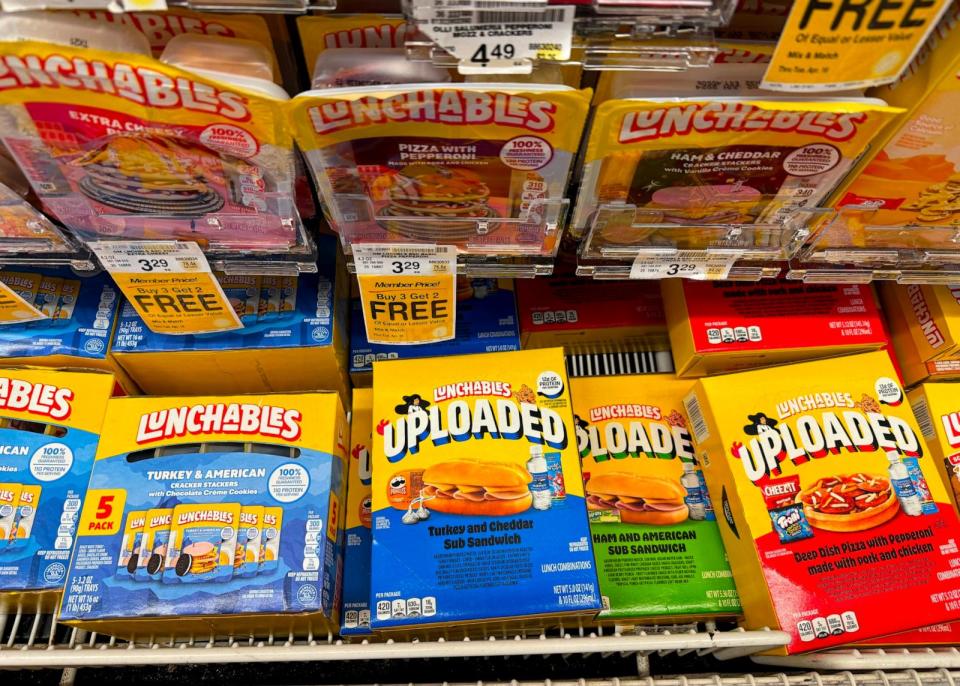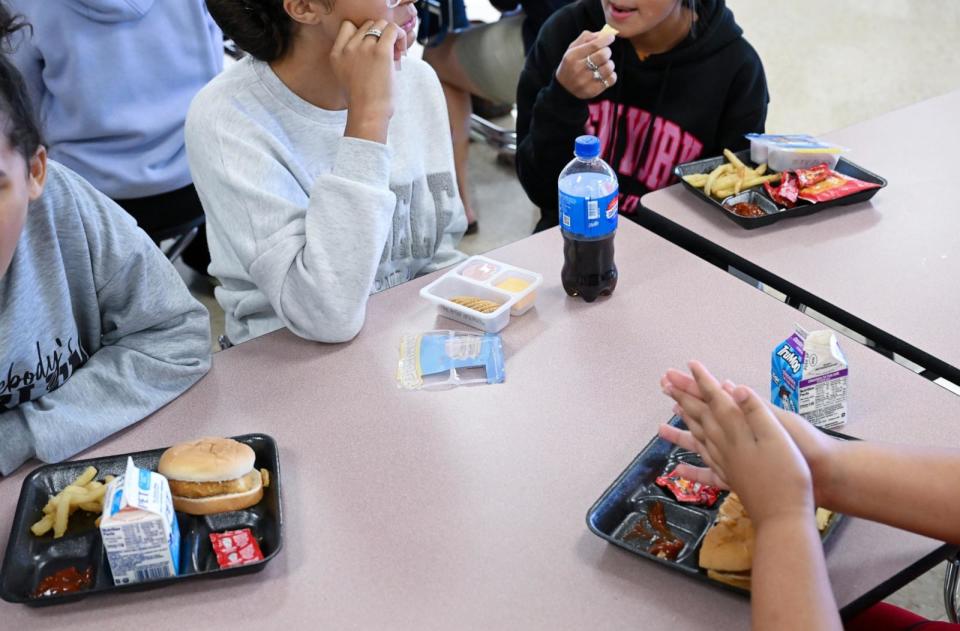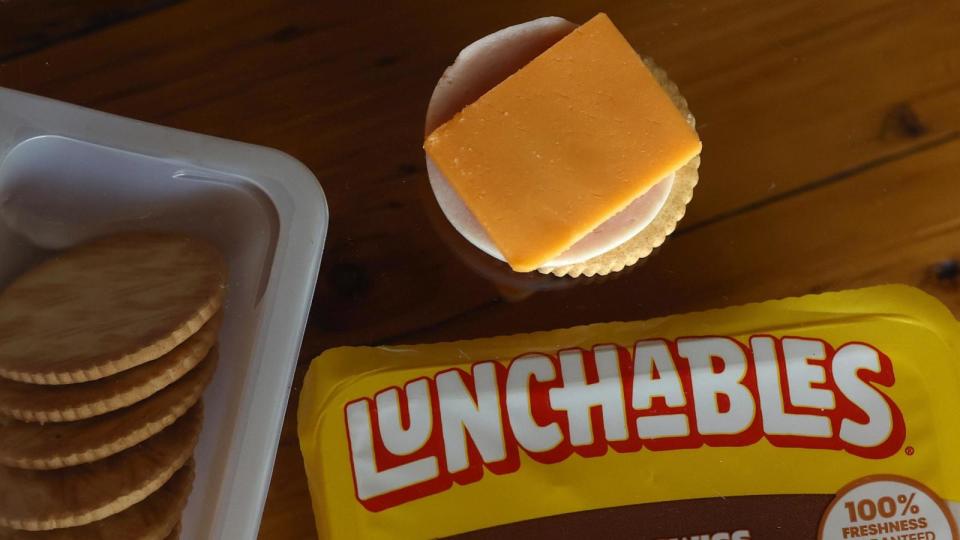Toxicologist, nutritionist on what to know about potential health risks of Lunchables
Consumer Reports is calling on regulators to remove Lunchables and similar kits from school cafeterias after testing a small sampling of various meal variety combinations from cheese and meat cracker stacks to pizzas.
In a new report Tuesday, the advocacy group said it tested 12-store versions of Lunchables and similar lunch products from other brands.
Consumer Reports said testing found the lunch meals have high levels of sodium and pointed out they are comprised of heavily processed food. They also tested two samples of the versions of these products that are distributed to schools under the national school lunch program, and found those versions had even higher sodium levels, which is attributed to the larger amount of meat in the school lunches for added protein.

"There's a lot to be concerned about in these kits. They're highly processed, and regularly eating processed meat, a main ingredient in many of these products, has been linked to increased risk of some cancers," Amy Keating, a registered dietitian at Consumer Reports, said in a statement included in the report.
Eric Boring, Ph.D., the Consumer Reports chemist who led the testing, added in prepared remarks, ”We don't think anybody should regularly eat these products, and they definitely shouldn't be considered a healthy school lunch."
Some of the kits also contained lead and cadmium, though those levels did not exceed any federal limits.
MORE: 2 Lunchables approved for National School Lunch Program to be served at cafeterias next year
The U.S. Food and Drug Administration says it's "not possible" to completely prevent heavy metals like lead and cadmium from entering the food supply. However, food manufacturers are required to minimize or prevent heavy metal exposure, especially in foods intended for vulnerable groups.

At high levels, heavy metals are hazardous to human health, especially for children. The Centers for Disease Control and Prevention says there is no known safe level of lead for children.
In an emailed statement to ABC News, a spokesperson for Kraft Heinz, the parent company of Lunchables and Oscar Mayer, said, "We are extremely disappointed with the reporting from Consumer Reports and believe the results of their study are misleading, causing undue concern over the safety of our products."
The company said "all Lunchables products meet strict safety standards set by government agencies" adding that "none of the food they tested exceeded any legal or regulatory limits."
Toxicologist and board-certified emergency medicine physician Dr. Stephanie Widmer told ABC News, said moderation and variety in a child's diet are key to reducing the risk of potential exposures.
"The unfortunate thing is that sometimes certain foods that we source, it's almost inherent that there are heavy metals in some of these foods [and] often unavoidable, so you want to try to avoid it as much as you possibly can,” Widmer said.
"Everyone's different and everyone consumes these products with different frequencies," Widmer said, reiterating that "you want to try to limit it as much as possible.”

Experts interviewed by ABC News said the Consumer Report analysis reinforces an existing body of research showing that pre-packaged lunch foods contain highly processed foods and high levels of sodium, each associated with health risks.
According to Consumer Reports, many of the lunch kits it reviewed were high in sodium, ranging from 460 to 740 milligrams per serving.
The daily recommended sodium intake guidelines for children ages 4 to 8 years old is less than 1,500 milligrams, the U.S. Department of Health and Human Services states.
"I'm concerned that the regular inclusion of Lunchables or Lunchable-type kits are not the nutrient-dense options we want young learners to be fed," nutritionist and registered dietitian Maya Feller told ABC News. "The high sodium content is definitely of concern, especially from a young age. The health risks associated with high and chronic consumption of added salts are well documented."
"In my clinical expertise, we want to see more nutrient-dense plant-forward options in schools, particularly ones with minimal added sugars, saturated fats and added salts," Feller continued.
Feller, who has worked with New York City Public Schools and the Wellness In The Schools Chef Council to help focus on culturally relevant, healthy, scratch-prepared food initiatives, said, "I would call for the USDA to expand partnerships like the Chefs Council as a vehicle for creative, delicious, nutrient-dense options."
"The key takeaway I want parents to understand is variety," Widmer said. "If you're looking for a healthy meal, is a Lunchable going to be the first thing that I pull off the shelf? No, of course not. But it happens on occasion. You just want to make sure your kids are getting a variety of different foods and they're not eating the same thing over and over again."
Toxicologist, nutritionist on what to know about potential health risks of Lunchables originally appeared on goodmorningamerica.com

